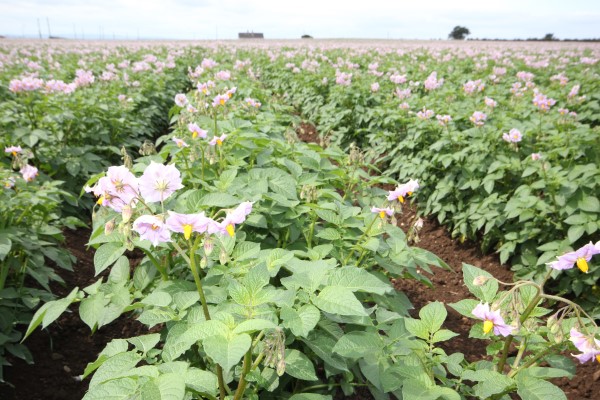Potatoes – Management Update July 2020
20 July 2020Blight risk update
There have been several Hutton periods over the last week or so due to the damp humid weather. Check with AHDB Potatoes Fight against Blight regularly for the most up to date information on outbreaks. Also, check BlightWatch or BlightCast for the general blight risk where your crops are located.
Dealing with blighted crops
- Act quickly to minimise the development of blight in the crop
This not only has the obvious benefits of minimising the impact of the disease on the crop and limiting the inoculum available to infect other crops but it should also reduce the risk of oospores being formed. For crops entered in the seed classification scheme discuss with SASA inspectors before desiccating any plants.
- The fungicides applied need to provide curative activity but also protection of healthy foliage (and tubers if formed).
For the fungicidal control of blight, the timing of application in relation to high-risk weather influences efficacy. Protectant fungicides give better protection if they are applied a day or two before a high-risk period. Curative fungicides prevent more early infections from developing into lesions if applied shortly after a high–risk period. If the target spray day is on the first or second day of a high-risk weather period, then it’s essential to use a fungicide with curative activity. Within this timescale, the greater the delay between the high-risk period and curative application, the greater curative efficacy required from the fungicide.
Curative active ingredients boost coverage because they are either translaminar or systemic and therefore are redistributed in the plant.
Virus management in seed potatoes
Detailed guidance on the management of aphid-borne virus was provided in a previous Crop Health Update, but can also be found here.
The significant aphid (and virus) pressure earlier in June has not really increased over the last month. The cooler wet weather has reduced aphid flights into crops, but they could resume with the resumption of a warm settled spell of weather. We have had reports of more virus-infected plants in seed crops this season by potato roguers – a consequence of the higher level of transmission last year.
Removing sources of infection from seed crops should be an on-going process. Roguing of crops to remove primary inoculum in the form of infected plants is essential.
Summary
- Identify and act against potential sources of the virus such as groundkeepers in adjacent crops and potato dumps. Early roguing of potato plants exhibiting virus symptoms from ware and seed crops, and but groundkeepers from non-potato crops is an essential component of virus management in seed potatoes
- Assess propensity of variety to PLRV or to PVY using the SASA website
- The cumulative appearance of aphids throughout the season can be monitored from the AHDB network of aphid water traps and the UK network of aphid suction traps:
- Growers are encouraged to use data from both the water traps and the suction traps to gauge the threat from aphids and virus in their area
- Aphicide treatments include acetamiprid, thiacloprid, flonicamid or spirotetramat in your programme every 14 days, with lambda-cyhalothrin or esfenvalerate every 7 days.
- Monitor regrowth after burning down and consider an aphicide to prevent virus transmission
Guidelines issued by the Scottish Aphid-Borne Virus Working Group, April 2020
Pests
Effective slug management in potatoes relies on applying molluscicide pellets at the best timing. Trials over several years have demonstrated that the key timing for pellet application is just before the crop canopy meets across the rows, particularly if there has been some rainfall or crops have been irrigated. If crops have passed this timing without a molluscicide treatment, consider applying a treatment at the next opportunity after there has been some rain. Both ferric phosphate and metaldehyde are effective molluscicides and can be used in a programme (e.g. ferric phosphate, metaldehyde, ferric phosphate). If planning to use a metaldehyde product note the guidelines issued by the Metaldehyde Stewardship Group and in particular the requirement for a 10-metre buffer zone to the edge of the field where no metaldehyde pellets should be applied.
Sign up to the FAS newsletter
Receive updates on news, events and publications from Scotland’s Farm Advisory Service


